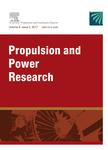Thermodynamic performance modeling,optimization and numerical simulation of RBCC ejector mode
作者机构:School of Aerospace EngineeringHuazhong University of Science and TechnologyWuhan 430074China Science and Technology of Scramjet LaboratoryBeijing Power Machinery Research InstituteBeijing 100074China
出 版 物:《Propulsion and Power Research》 (推进与动力(英文))
年 卷 期:2024年第13卷第2期
页 面:207-232页
核心收录:
学科分类:080703[工学-动力机械及工程] 082502[工学-航空宇航推进理论与工程] 08[工学] 0807[工学-动力工程及工程热物理] 0825[工学-航空宇航科学与技术]
基 金:supported by the National Natural Science Foundation of China (Grant No.52076094)
主 题:Rocket-based combined cycle(RBCC) Ejector mode Performance modeling Optimization Numerical simulation
摘 要:Ejector mode is a unique and critical phase of wide-range rocket-based combined cycle(RBCC)*** this paper,a quasi-one-dimensional thermodynamic performance modeling method,with more detailed model treatments for the inlet-diffuser system,pri-mary/secondaryflow interaction,and pressure feedback matching,was developed for operating characteristics studies and multi-objective optimization analysis of the ejector mode of an actual RBCC engine.A series of three-dimensional simulations of separate inlet and fullflowpath was completed to validate the modeling study and provide further insight into the operating *** primary/secondary equilibrium pressure ratio functions a significant effect on ejector mode performance,a higher performance augmentation can be obtained by lower rocket pressure ratio,larger mixing section area ratio,smaller throttling throat and higher equivalence ratio,within an appropriate *** positive performance augmentation can be realized at lowflight Mach conditions,the coordination and trade-off relationships between specific im-pulse,performance augmentation ratio and thrust-to-area ratio during ejector mode are present by the Pareto-front from MOP *** is further verified by CFD simulation that,the operating back-pressure at the exit of inlet-diffuser system functions a decisive influence on the airbreathing characteristics,the pressure feedback and matching should be well-controlled for secondaryflowrate and performance *** thermodynamic modeling analysis re-sults are basically consistent with those of numerical simulation,to validate the rationality and effectiveness of the modeling method.



